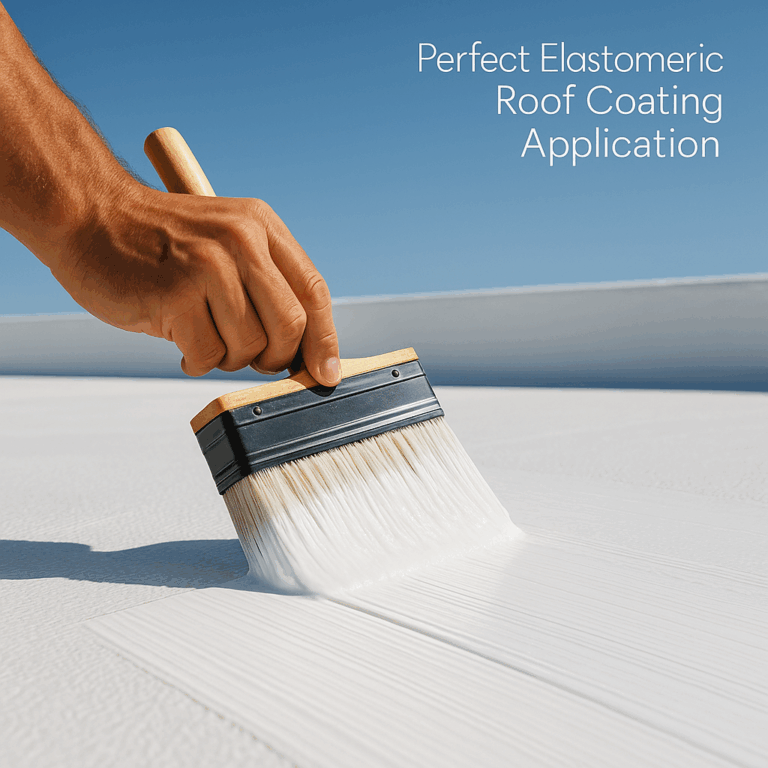Mastering Application Techniques for Elastomeric Roof Coatings
Elastomeric roof coatings have become a popular choice in the commercial roofing industry, prized for their durability, flexibility, and energy efficiency. However, the benefits of these coatings hinge largely on proper application techniques. With over 15 years in commercial roofing, I’ve seen firsthand how a meticulous approach to applying elastomeric roof coatings can extend roof life and optimize performance. This article dives deep into the most effective application methods, offering practical insights to ensure your next project is a success.
Understanding Elastomeric Roof Coatings
Before exploring application techniques, it’s essential to grasp what makes elastomeric roof coatings unique. These coatings are synthetic rubber-based materials designed to flex and stretch, accommodating roof movement without cracking. They adhere well to various substrates including metal, single-ply membranes, concrete, and more. Their reflective properties help reduce energy costs by deflecting UV rays, while their waterproofing ability keeps roofs safe from moisture infiltration.
The versatility of elastomeric coatings places a premium on the application process—because even the highest-quality coating can fail if not applied correctly.
Preparing the Roof Surface: The Foundation of Success
One of the most overlooked stages in applying elastomeric roof coatings is surface preparation. The roof must be clean, dry, and free of debris, oils, and loose materials. Surface contaminants interfere with adhesion and reduce the coating’s effectiveness.
Practical tips for surface prep include:
– **Cleaning:** Use power washing or manual scrubbing to remove dirt, mold, mildew, and old loose coatings. For oily spots, apply a suitable degreaser and rinse thoroughly.
– **Repairs:** Address cracks, blisters, and joints before coating. Use compatible patching materials resistant to elastomeric products.
– **Drying Time:** Ensure the roof is completely dry. Moisture trapped beneath coatings can cause bubbling and delamination.
Neglecting any part of this preparation can lead to costly failures, so take time to set a solid foundation.
Choosing the Right Application Method
There are several ways to apply elastomeric coatings, each suited to specific project needs, roof types, and desired finish quality. The primary application techniques include:
– **Spraying:** Airless spray equipment is efficient for large commercial rooftops. It allows uniform coverage and penetration into seams and crevices. However, spraying requires skilled operators and consideration of wind conditions to prevent overspray.
– **Rolling:** Using long-handled rollers is straightforward and cost-effective for smaller areas or touch-ups. Rollers provide control but can be labor-intensive and may result in uneven thickness if not carefully managed.
– **Brushing:** Ideal for detail work around edges, flashings, and repairs. Brushes ensure precision but are not practical for broad surfaces.

Often, a combination of methods offers the best outcome—spraying the main surface and rolling or brushing tight areas and penetrations.
Applying the Coating: Tips for Consistency and Coverage
Successful application goes beyond spreading the material. The goal is a consistent, uniform film thickness, typically recommended between 20 to 40 dry mils per coat. This thickness balances flexibility and protection.
Key points include:
– **Multiple Coats:** Apply at least two coats, allowing recommended drying times between. The first coat penetrates and seals the substrate; the second reinforces durability and reflectivity.
– **Weather Considerations:** Apply only in suitable weather—temperatures between 50°F and 90°F and no rain forecasted within 24 hours. Humidity affects drying times and adhesion.
– **Overlap Patterns:** Use a consistent overlap of 50% when spraying, rolling, or brushing to avoid gaps.
– **Edge Sealing:** Pay special attention to seams, flashings, and penetrations, ensuring thorough coating to prevent water intrusion.
Keeping these practices at the forefront minimizes the risk of early failures and maximizes long-term performance.
Common Pitfalls and How to Avoid Them
Challenges in elastomeric roof coating application usually stem from preparation shortcuts, improper thickness, or suboptimal environmental conditions. Avoid these:
– **Applying Too Thin:** Thin coats can crack and peel, providing false economy initially but increasing long-term costs.
– **Inadequate Drying Time:** Rushing coats leads to trapping moisture and reduces adhesion.
– **Ignoring Roof Movement:** Elastomeric coatings stretch, but substrates that shift excessively may need additional reinforcement or specialized primers.
A practical example comes from a retail center I consulted on, where improper cleaning of an EPDM membrane led to blistering despite a thick coating. After correcting the surface preparation and properly rolling on two coats, the roof system has remained watertight for several years.
Practical Example: Warehouse Retrofit Success
A recent project involved a 50,000-square-foot warehouse with an aging modified bitumen roof showing signs of wear and leaking at seams. We recommended an elastomeric roof coating system applied by airless spray combined with hand rolling at edges.
Key steps included:
– Power washing to remove dirt and oxidized materials.
– Repairing seams with compatible seam tape and patch materials.
– Two coats of elastomeric coating sprayed at 30 mils per coat.
– Rolling around flashings and penetrations to ensure coverage.
Six months post-application, the client reported cooler interior temperatures and zero leaks, even after a heavy rainstorm. The coating’s reflective properties also contributed to noticeable energy savings during summer months.
Encouraging Continued Exploration
Mastering elastomeric roof coating application techniques opens doors to enhanced roof longevity, energy efficiency, and cost-effectiveness. For contractors and building owners alike, investing time in learning these methods pays dividends through reduced maintenance costs and reduced environmental impact.
Dive deeper into product datasheets, manufacturer training sessions, and hands-on workshops to keep your skills sharp. Remember, every roof is unique, so adapting these techniques to specific substrates and conditions is crucial.
“Good roof coating application is a blend of science and craftsmanship,” as one roofing expert once said, emphasizing that technical knowledge paired with practical experience yields the best results.
Whether upgrading an existing roof or tackling a new project, applying elastomeric coatings with precision safeguards your investment—and ultimately, the building it protects.